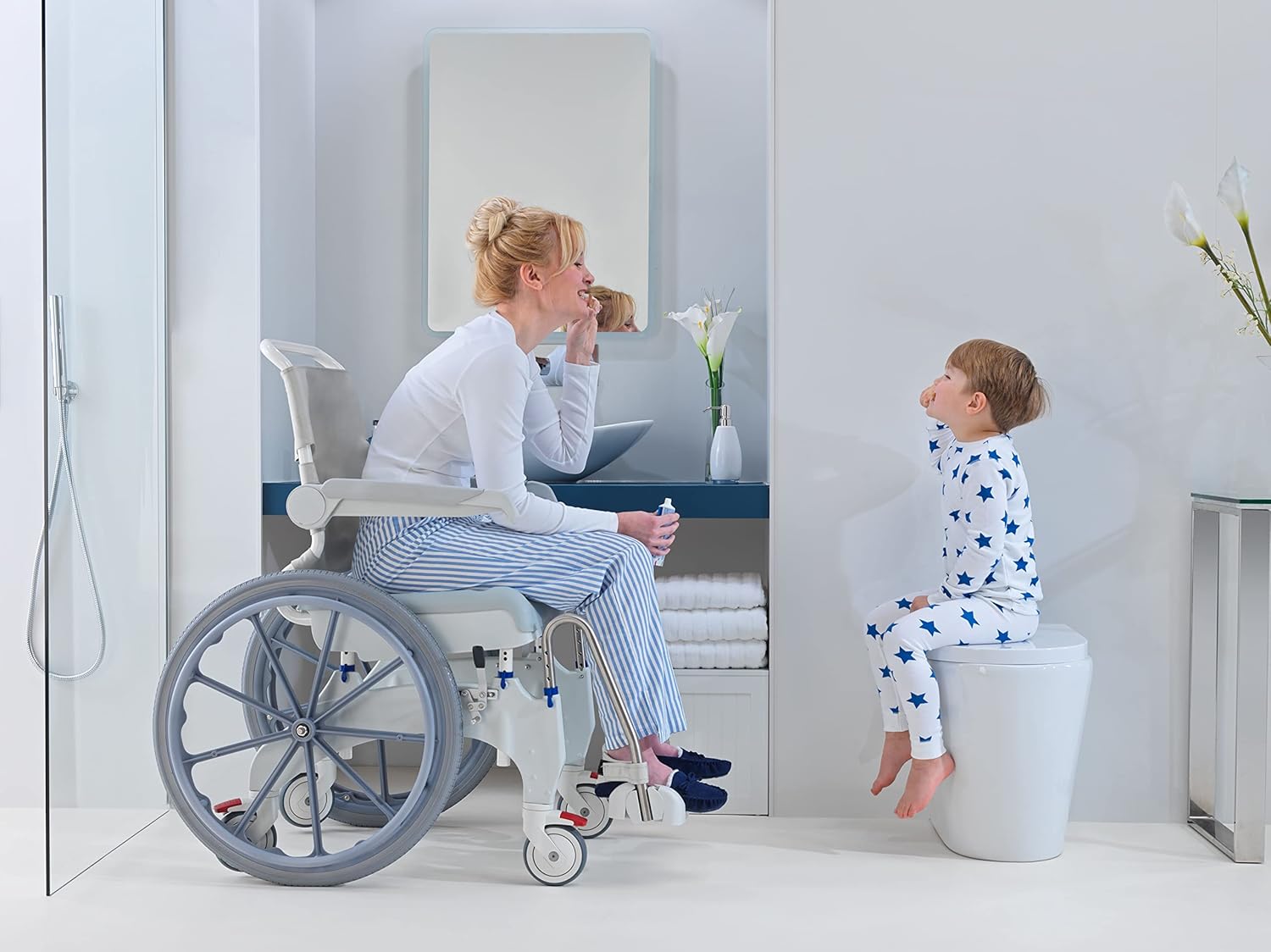Your Cart is Empty
Free shipping | Bulk Order Discounts | Best price guaranteed
Menu
-
- Home
- Shop By Category
- Moving + Handling
- Bathroom
-
Mobility Scooters
- Pavement Mobility Scooters
- Folding Mobility Scooters
- Lightweight Mobility Scooters
- 4mph Mobility Scooters
- 6-8mph Mobility Scooters
- Travel Mobility Scooters
- Lithium Mobility Scooters
- Car Boot Scooters
- Enclosed Mobility Scooters
- All Terrain Scooters
- 2 Person Scooters
- Mobility Scooter Storage
- Mobility Lifts and Hoists
- Mobility Scooter Canopies
- Seating
- Wheelchairs
- Rollators
- Beds + Mattresses
- Medical Equipment
- Powerchairs
- Health + Safety
- Help Centre
- Returns
- Price Guarantee
- Contact Us
-
- Speak With An Expert: 020 3576 3028
- Login

Free shipping | Bulk Order Discounts | Best price guaranteed
Add description, images, menus and links to your mega menu
A column with no settings can be used as a spacer
Link to your collections, sales and even external links
Add up to five columns
Add description, images, menus and links to your mega menu
A column with no settings can be used as a spacer
Link to your collections, sales and even external links
Add up to five columns

How to Use a Commode Chair: A Practical Guide
September 24, 2024 6 min read
Using a commode chair can significantly enhance comfort and safety for those with mobility challenges. A commode chair is a portable toilet designed to be placed at the bedside, making it easier for individuals to go to the bathroom without needing to travel far. It acts as a helpful solution for elderly individuals, those recovering from surgery, or anyone who struggles with mobility issues.

Image from Senior
Step-by-Step Guide to Using a Commode Chair
Step 1: Choose the Right Commode Chair
Before using a commode chair, ensure it is the right type for your needs. Consider options like standard, over-the-toilet, or raised toilet seats based on your specific requirements.
Step 2: Prepare the Area
- Location: Place the commode chair in a convenient spot, preferably close to the bed.
- Clear Space: Ensure the area around the chair is free from obstacles for easy access.
- Secure the Floor: If the floor is slippery, consider a non-slip mat underneath the chair for stability.
Step 3: Familiarise Yourself with the Chair
- Adjust Height: If the chair is adjustable, set it to a comfortable height.
- Check Stability: Ensure the chair is on a flat surface with all legs securely positioned.
Step 4: Transfer to the Commode Chair
- Positioning: Sit on the edge of the chair or bed facing the commode chair.
-
Transfer Technique:
- Independent Users: Use the arms of the chair for support to pivot into the seat.
- Caregiver-Assisted Transfers: A caregiver can assist by providing support from behind or beside the user.
Step 5: Use the Commode Chair
- Comfort Position: Sit back comfortably in the chair.
- Privacy: Use a privacy curtain if needed.
- Using the Toilet: Use the commode as you would a regular toilet, keeping necessary items within reach.
Step 6: Clean Up After Use
- Wipe Down: Clean the seat and surrounding areas with sanitising wipes.
- Dispose Properly: If using disposable liners, dispose of them according to local waste guidelines.
- Wash Hands: Always wash your hands thoroughly after using the commode.
Step 7: Transfer Back to Bed or Chair
- Position Yourself: Shift forward in the commode chair to prepare for standing.
-
Transfer Technique:
- Independent Users: Use the armrests to push yourself up and pivot to stand.
- Caregiver Assistance: The caregiver should assist as necessary for safe transfer.
Step 8: Regular Maintenance
- Check Functionality: Regularly check that the chair is functioning properly.
- Clean Regularly: Keep the chair clean and hygienic by performing regular maintenance.
Key Takeaways
- Commode chairs provide convenience and safety for those with mobility issues.
- Proper setup and maintenance are crucial for hygiene and durability.
- Knowing where to find replacement parts can help maintain a chair's functionality.
Understanding Commode Chairs
Commode chairs offer a convenient solution for individuals with limited mobility. These devices include a variety of models, each with unique features designed to meet different needs. When choosing a commode chair, it's crucial to consider its type, key features, and suitability for the user.
Types of Commode Chairs
There are several types of commode chairs, each serving specific needs. Bedside commodes provide easy access by the bed for those unable to reach the toilet independently. Portable commodes are lightweight and easy to move, allowing users to position them wherever needed.
For individuals requiring more robust support, bariatric commodes offer a stronger frame and higher weight capacity. The drop arm bedside commode version is ideal for easier user transfers, while folding models provide convenience for travel or storage. The versatile 3-in-1 bedside commode serves multiple functions as a toilet safety frame, raised toilet seat, and stand-alone commode.
Selecting the Appropriate Commode Chair
When choosing a commode chair, consider the user's specific needs. A padded seat might be preferred for extra comfort during longer use. Assess whether an adjustable height feature is needed to fit various bed or chair heights. Adjustable legs ensure stable support on uneven surfaces.
In medical equipment, ease of cleaning is essential. Check if the chair has a removable commode pan for straightforward maintenance. It's also crucial to consider the available space at home, as some models, like folding ones, require less storage. Explore options from trustworthy providers to find reliable and suitable choices.
Key Features of Commode Chairs
Modern commode chairs include essential features that enhance usability. Most have armrests, offering stability when sitting or standing. Materials like lightweight aluminium or rust-resistant steel provide durability. Look for non-slip rubber feet to prevent movement during use.
Some commode chairs feature back supports for added comfort. For user safety, consider models with a locking mechanism that secures the chair in place. Ease of assembly is vital, especially if you frequently travel or rearrange furniture. Choosing a chair with a removable seat and lid eases the cleaning process, ensuring better hygiene for daily use.
Recommended Commode Chairs
When choosing a commode chair, comfort and usability are key. There are several excellent options, each catering to different needs and preferences. Here are some top picks.
1. Chiltern Invadex Transaqua Shower Commode Wheelchair
This versatile commode chair offers both self-propelled and attendant-propelled options, making it ideal for various user needs. Constructed from durable materials for enhanced hygiene, it features adjustable height and removable armrests for added comfort. The Transaqua is designed for easy transport and storage, providing a reliable solution for both home and care environments.

Image from Chilterninvadex
2. Aidapt Bewl Shower Commode Wheelchair
Aidapt Bewl shower commode chairstands out as a versatile option. It functions as a self-propelled wheelchair, making it a good choice if you require mobility support while also needing a commode. The chair ensures comfort and offers convenience for all your bathroom needs.

Image from Medicalsearch
3. Invacare Ocean Ergo Shower Chair
This chair is designed with safety and independence in mind. It features a soft contoured seat, offering both transit and self-propelled options. This is particularly helpful if you prioritise safety and ease of use. Explore more about the Ocean Ergo Shower Chair.
These commode chairs each offer specific benefits, ensuring you can find one that meets your personal needs and lifestyle. Choose the one that aligns with your daily requirements for the best experience.
Utilising and Maintaining a Commode Chair

Image from iStock
Using a commode chair effectively involves proper setup, safety checks, and cleaning. Care is required to ensure comfort and maintain hygiene, especially for those with reduced mobility or seniors.
The Proper Way to Use a Commode Chair
Start by placing the commode chair on a flat, stable surface. Make sure it is near the user for easy access. Assist your elderly loved ones with sitting down carefully, using the armrests for support. Always check the weight capacity of the chair before use to ensure safety.
Use a commode liner in the pail to make cleaning easier and more hygienic. After use, provide wet wipes or toilet paper for the user to clean themselves. Dispose of the liner responsibly to maintain hygiene and keep the area clean.
Safety and Comfort Measures
Safety is crucial when using a commode chair. Ensure the chair is stable and positioned near the bed or in a convenient location. Using a toilet safety frame can offer additional support to those with mobility issues.
Make sure the seat is properly clipped onto the chair. For added comfort, cushion the seat or add a toilet seat cover. Always supervise if necessary, especially when it involves a home care setting with elderly individuals.
Cleaning and Hygiene
Maintain cleanliness by donning disposable gloves when handling the commode. Remove the commode pail and dispose of any waste responsibly. Wash the pail thoroughly with soap and water.
Opt for a commode liner to simplify this process. Cleaning commode parts regularly ensures a hygienic environment, reducing the risk of infections. Encourage regular hygiene by providing personal cleaning items like wet wipes and tissues.
Managing Commode Chair Odour
To control odour, use deodorising products or natural odour absorbers. Sprinkling baking soda in the commode pail can be effective. Replace the commode liner frequently to minimise smells.
Ensure good ventilation in the room by opening windows or using air purifiers. Regular cleaning is vital for bedside commode odour control. These steps ensure a comfortable experience for both the user and any caregivers involved.
Frequently Asked Questions

Image from Direct Healthcare Group
Using a commode chair involves understanding how to set it up with a liner, use it over a toilet, and maintain hygiene effectively.
How does one correctly place a commode liner within the commode?
To place a commode liner, first ensure the commode pan is in position. Unfold the liner and place it into the pan, making sure it's spread out evenly.
Some liners come with absorbent pads which help in containing liquid waste. Secure edges to prevent spills.
Could you explain the procedure for using a commode chair over a traditional toilet?
Position the commode chair directly above the toilet bowl. Remove any pan or bucket beneath the seat.
Make sure that it is stable before using. This setup allows you to use the traditional toilet while benefitting from the support of the chair.
What are some practical tips for maintaining hygiene while using a commode chair?
Always clean the commode pan or liner after each use. Using a couple of inches of water in the pan before use can make cleaning easier.
Wipe down all surfaces regularly with disinfectant. Consider using disposable gloves when cleaning for added hygiene.
Also in Blog

What Does Moving and Handling Training Involve? Key Components
January 06, 2025 4 min read
Read MoreSubscribe
Sign up to get the latest on sales, new releases and more …

